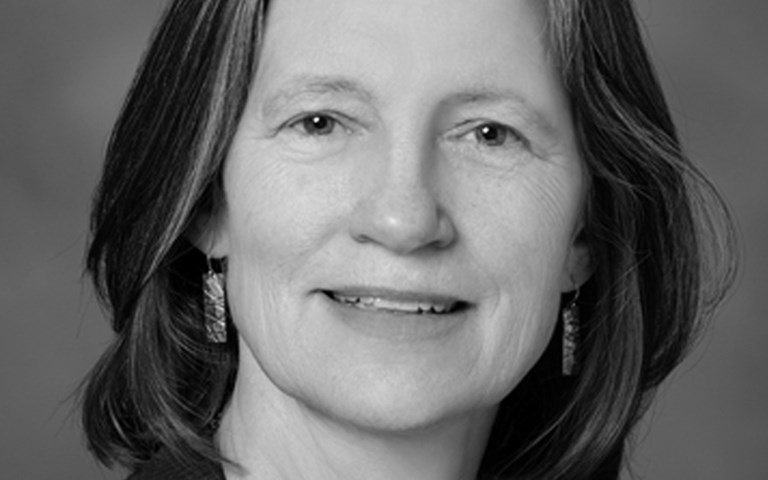Soil microbiologist Julie Neilson, an associate research professor in the Department of Soil, Water and Environmental Science at the University of Arizona (UA) in Tucson, spends her working days finding ways for plants to grow better on top of copper tailings and waste rock piles in water-deficient arid environments in her home state. The lessons from her work can be applied to Australia, Mongolia, Chile, Western Canada and many other desert-like environments where copper is mined and reclamation is an important public relations and health issue.
CIM: What path led you to getting your PhD and becoming a soil microbiologist?
Neilson: I’m from Washington, D.C., originally; I did a general biology degree in Vermont and was most fascinated by microbiology. I joined the Peace Corps and worked in Jamaica with their Ministry of Agriculture for two and a half years, working with subsistence farmers. I was basically helping farmers who couldn’t afford fertilizer develop strategies to produce crops. That started my whole career of working in marginal terrestrial systems like deserts, and being fascinated by the capacity of soil microbes to make these marginal systems work.
CIM: What drove your interest in applying microbiology to mine site reclamation?
Neilson: At UA in Tucson I started working with Raina Maier, a professor in the Department of Soil, Water and Environmental Science, who is the director of both the National Institute of Environmental Health Sciences Superfund Research Program and the Center for Environmentally Sustainable Mining at UA looking at restoration of legacy mine sites with arsenic and metal contamination issues.
I ended up getting drawn into some of the projects related to mining. We have tons of mining legacy site issues here in Arizona because of low rainfall and other conditions, which means these areas do not have vegetated growth to help contain the contaminants on site. They become major dust and water erosion problems. Back to the 1800s, they hauled their mine tailings by ox carts to the stream edges, because they needed water to process ore. So you have these highly contaminated, small tailings piles, located on the few perennial streams that exist in southern Arizona, so you get lead, zinc, copper and arsenic contamination in these water systems. You also get dust affecting communities. We’ve been working in this area of legacy mine contamination since 2005.
CIM: What sort of challenges are companies facing when they try to revegetate their active or recently closed copper mines in places like southern Arizona and Mexico?
Neilson: Arid desert soils are naturally low in nitrogen, really low in organic carbon and it doesn’t rain. And most industries cannot afford to be irrigating hundreds of acres trying to get things to grow. Those are the constraining factors that we deal with that are unique to the Southwest, but it’s really common to huge areas of the world where copper is mined.
CIM: How have you been working with companies to deal with reclaiming areas in Arizona?
Neilson: I’ve been spending a lot of my time working under a cooperative model with three major international mining companies with mines in this state, including Rio Tinto’s Resolution Copper mine, ASARCO Mission mine complex (Grupo Mexico) and KGHM International’s Carlota mine. We do research as a group so everyone can see what the other is doing, so we can find solutions that are applicable across different companies. Unlike most company-hired consultants, we look at the below ground quality; what we say is, you can add fertilizers and amendments to your seed mixes and get plants to grow in the short term, but if you don’t get some kind of ecosystem development going on, you’re basically trying to get plants to grow in rock.
CIM: What factors determine whether plants ultimately grow above a waste rock or tailings pile?
Neilson: We have come up with a list of bioindicators that ultimately predict whether plant growth will be successful. Indicators that appear most relevant include pH, soil electrical conductivity, which is a measure of your salt (which in arid soil is high and can be toxic to plants), nutrient status, where we look at nitrogen in the system and organic carbon, which you need to build up in the system over time to establish a reservoir of nutrients. We look at soil structure, including moisture holding capacity, and we measure the bacteria present. We also extract all the DNA from the system and try to get a fingerprint of the biological environment to reveal whether key plant growth promoting microbes are present.
CIM: Can you provide an example of how you have worked with a company trying to improve its revegetation efforts?
Neilson: ASARCO has several large tailings storage piles that are 500-600 acres in size that they are trying to revegetate. They have spent over $30 million on this project. It was seeded in 2009, and they used a 12-inch soil cap [desert soil scooped up from elsewhere] to put on top of the tailings prior to seeding. The first time I saw it, certain areas had vegetation doing really well, and in other areas it was horrible, even though it was all seeded with the same seed mix at the same time. So the only difference was that the capping material came from different places. The ASARCO environmental manager wanted to understand why there was the difference in plant growth at the different sites. The area that had used topsoil as a cap was the one that had 10-foot mesquite trees and all kinds of plant diversity, and the areas capped with deeper depth materials barely had grasses. We screened soil samples from different areas of the tailings pile, analysed them using all those bioindicators I mentioned, and found the only big differences were that there were more nutrients and significantly higher amounts of bacteria living in the well vegetated areas.
CIM: What is the potential for genetically engineering soil components like bacteria or fungi?
Neilson: We don’t need to engineer the organisms, we just need to find the right ones. The microbes that can do the same nutrient cycling as the microbes in temperate areas exist in these harsh arid conditions, we just haven’t discovered them yet. Moving forward there’s a huge potential for mines to use strategies such as applying an inoculum of a bacteria or fungus that we know will survive in the system. So you can add these organisms that will fix nitrogen and carbon from the atmosphere into plant usable forms or cycle nitrogen, and this is a technology that many mines can probably afford to do in the future.
CIM: Are there any other technologies or approaches/processes that are coming in the near future that will help us to do a better job at reclamation?
Neilson: What excites me is the concept of turning waste rock into a good capping material. This is a strategy currently being explored by some of the mines that I am working with. Mines [often have access] to good green waste and topsoil that they destroy in order to mine, and they have the heavy equipment to do things I cannot even conceive of doing, like incubating future cap material for their tailings pile that they’re just starting to build. Contrast that with what often happens now, which is to go off into the desert, blast a hole, and destroy a healthy ecosystem to get the capping material. Alternatively, they can mix different components that they already have on their property like waste rock with green waste and work toward making a capping material that they will use 20 years from now. The bioindicators that we are developing will give them tools to evaluate the quality of new cap materials.




